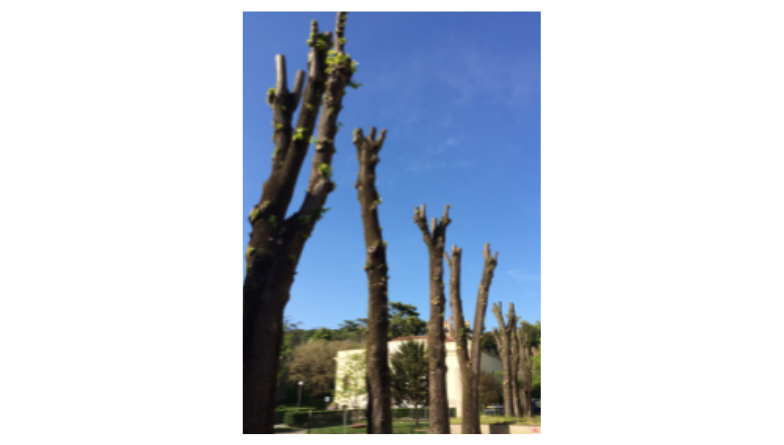Crowning Achievements: Effect of topping on microclimate conditions and human comfort
The painful sight of mangled trees due to tree topping is, unfortunately, still common to the present day. Though extreme pruning and crown restructuring may be required for safety reasons, such an intervention cannot be continued forever and it is detrimental to tree life. We know that topping trees depresses tree health, but we didn’t know until now the effect it had on microclimate conditions and human comfort in urban environments.
With his Jack Kimmel International Grant, “Effect of Topping on Microclimate Condition and Human Comfort,” Dr. Francesco Ferrini, ISA’s 2019 Award of Merit Winner (see page 2), University of Florence, Italy, studied the effect tree topping had on two common tree genera, maple (Acer spp.) and linden (Tilia spp.) through (1) phenological phases (budbreak date, leaf yellowing and leaf fall), (2) biometric data (shoot length, trunk diameter, crown width, leaf area), (3) ecophysiology (leaf gas exchange, A/Cc curves), (4) SPAD values, (5) thermal imaging, and (6) climate data. Dr. Ferrini found significant temperature differences between the plots with topped trees and unpruned trees. He estimates that tree topping results in an annual increased cost of between $250 to $490 in additional air conditioning required to lower indoor room temperatures in surrounding buildings. He also found that phenological phases were delayed in topped trees such that both budbreak and leaf fall were later than in trees with no topping.
Dig deeper into Dr. Ferrini’s study on the negative effects of tree topping on microclimate conditions, human comfort, tree physiology and tree morphology by clicking here.
Click here for the complete, September 2019 issue of TREE Press.

